Dandelion
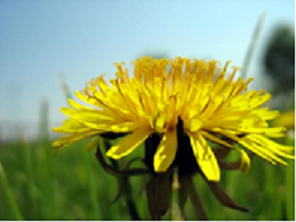
Dandelion is possibly the most misunderstood ‘weed’ out there. Many people spend a lot of resources trying to eradicate this plant, when instead they could be eating it! Dandelion offers itself freely and abundantly to help counteract many of the imbalances in modern society. It is a traditional spring tonic, to re-invigorate the body systems after a long slow winter eating starchy, fatty foods. But dandelion is a wonderful medicine all year round. Read on to learn more about this amazing plant!
Actions and Uses
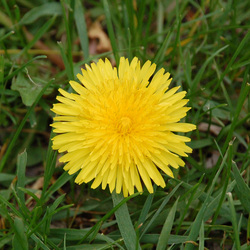
Some of dandelion’s main actions include:
digestive aid
bitter tonic
stimulating bile secretion
diuretic
detoxifying
mildly laxative
anti-oxidant
nutritive
and a supreme liver tonic!
digestive aid
bitter tonic
stimulating bile secretion
diuretic
detoxifying
mildly laxative
anti-oxidant
nutritive
and a supreme liver tonic!
Dandelion is a diuretic, increasing the flow of urine, particularly the leaves. Its French nickname ‘pis-en-lit’ (pee in bed) alludes to its efficacy as a diuretic. However, due to its high potassium content it does not deplete potassium; a common side effect of pharmaceutical diuretics. This diuretic action paired with its liver toning abilities make dandelion a wonderful detoxifier.
Due to its strong but gentle action on the liver, dandelion can help balance hormones. The liver processes practically everything that goes through your body, including hormones. When the liver is sluggish or backed up, excess hormones may build up in your blood stream. By increasing the liver’s ability to process hormones, dandelion helps to normalize hormone levels in your body.
Dandelion is also a great digestive aid. The bitter action of dandelion roots and leaves stimulates digestion, aiding in the breakdown of fats and protein and the assimilation of nutrients. This can lead to a mild laxative effect, especially for those with chronic constipation.
Due to its strong but gentle action on the liver, dandelion can help balance hormones. The liver processes practically everything that goes through your body, including hormones. When the liver is sluggish or backed up, excess hormones may build up in your blood stream. By increasing the liver’s ability to process hormones, dandelion helps to normalize hormone levels in your body.
Dandelion is also a great digestive aid. The bitter action of dandelion roots and leaves stimulates digestion, aiding in the breakdown of fats and protein and the assimilation of nutrients. This can lead to a mild laxative effect, especially for those with chronic constipation.
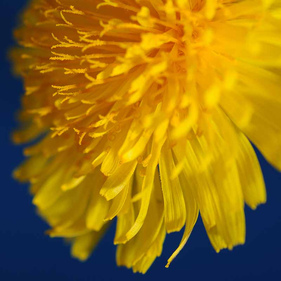
Dandelion is commonly used for:
skin conditions
liver/gall bladder conditions
arthritis and gout
constipation
poor appetite
kidney issues
high cholesterol
edema
abnormal blood sugar levels
general detoxification as a nutritive
skin conditions
liver/gall bladder conditions
arthritis and gout
constipation
poor appetite
kidney issues
high cholesterol
edema
abnormal blood sugar levels
general detoxification as a nutritive
Dandelion leaves are a wonderful source of potassium, calcium, Vitamin A, iron and protein. The roots are similarly rich in nutrients.
The white sap of dandelion helps to remove warts, corns, and other unwanted growths when applied regularly. The sap can be found easily in the stem and leaves.
The fall gathered roots are a wonderful source of inulin- a low glycemic plant sugar which helps to normalize blood sugar, feeds gut bacteria, and balances out the bitter qualities.
The white sap of dandelion helps to remove warts, corns, and other unwanted growths when applied regularly. The sap can be found easily in the stem and leaves.
The fall gathered roots are a wonderful source of inulin- a low glycemic plant sugar which helps to normalize blood sugar, feeds gut bacteria, and balances out the bitter qualities.
Energetically, dandelion affects the solar plexus, bringing more joy into life. It also teaches us tolerance, and to see the beauty in the simple and mundane. Dandelion offers herself to us as a gift, showing up in abundance everywhere that humans are. Indeed this plant seems to treat many of the more common ailments in modern society.
Preparation
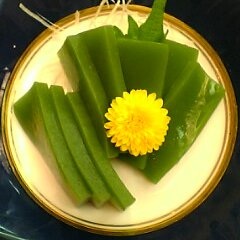
Dandelion leaves and flowers make a delicious, medicinal, and beautiful addition to salads. You can also make a delightful wine from dandelion flowers – an alcoholic beverage that is actually good for your liver! These flowers are so versatile and abundant; you can even fry them up into fritters!
Sautéed dandelion greens make a delicious and nutritious side dish, helping one to digest the rest of the meal. I enjoy them with garlic and butter. I like to freeze cooked dandelion greens to be consumed in the winter months along with the starchier, fattier foods I am wont to eat.
One of my favorite uses of dandelion is to chop and dry the root, and then roast it. Roasted dandelion root makes a dark, flavorful drink that is often used as a coffee replacement. It is delicious, stimulates digestion, is completely local and fair trade, caffeine free, and free for the gathering!
In the fall, I harvest a large amount of dandelion root and leaf, and tincture most of it. You can tincture the roots and leaves separately or together. Or you can tincture the roots and eat the leaves. Tincture the roots in 50% alcohol, as inulin is water soluble.
Sautéed dandelion greens make a delicious and nutritious side dish, helping one to digest the rest of the meal. I enjoy them with garlic and butter. I like to freeze cooked dandelion greens to be consumed in the winter months along with the starchier, fattier foods I am wont to eat.
One of my favorite uses of dandelion is to chop and dry the root, and then roast it. Roasted dandelion root makes a dark, flavorful drink that is often used as a coffee replacement. It is delicious, stimulates digestion, is completely local and fair trade, caffeine free, and free for the gathering!
In the fall, I harvest a large amount of dandelion root and leaf, and tincture most of it. You can tincture the roots and leaves separately or together. Or you can tincture the roots and eat the leaves. Tincture the roots in 50% alcohol, as inulin is water soluble.
Harvesting
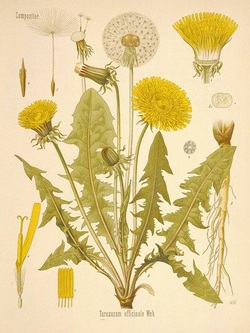
Dandelion is one of the most well-known herbs out there, but there are a lot of dandelion look-a-likes, so make sure you’ve got the right plant! Dandelion always has one bright yellow flower per hollow, unbranched stalk. Dandelion is also known as dent-de-lion, lion’s teeth. The leaves of this plant are toothed when mature. The leaves are hairless (unlike its cousin chicory), and they all grow from a single central point
It is best to harvest the roots in the fall, before the ground freezes but after the plant has had all summer to build up stores of inulin. You can also harvest the roots in the spring before the plants go to flower. At this time they will have used up most of their inulin stores, but will have more concentrated amounts bitter constituents. It can be fun to harvest at both times and see how each medicine feels different to you!
Dandelion is a non-native species that self-propagates rapidly with its well-known puff balls of wind-or-wish-blown seeds. It grows close to human civilization and in abundance – it WANTS to be used! This is one plant that you need not worry about overharvesting! Even when you dig up the roots, small pieces that are bound to break off into the ground will grow into entirely new plants. Take as much as you need! Just be sure to harvest in an area that has not been sprayed with herbicides or pesticides, and as far from main roads as possible.
It is best to harvest the roots in the fall, before the ground freezes but after the plant has had all summer to build up stores of inulin. You can also harvest the roots in the spring before the plants go to flower. At this time they will have used up most of their inulin stores, but will have more concentrated amounts bitter constituents. It can be fun to harvest at both times and see how each medicine feels different to you!
Dandelion is a non-native species that self-propagates rapidly with its well-known puff balls of wind-or-wish-blown seeds. It grows close to human civilization and in abundance – it WANTS to be used! This is one plant that you need not worry about overharvesting! Even when you dig up the roots, small pieces that are bound to break off into the ground will grow into entirely new plants. Take as much as you need! Just be sure to harvest in an area that has not been sprayed with herbicides or pesticides, and as far from main roads as possible.
So, what are you waiting for? Go gather some dandelion today! It is only just starting to flower, so you can surely find some nice bitter spring roots to gather. Later, when it is in full bloom, harvest the flowers and some leaves (always leave some leaves for the plant). Sit and breath with this wonderful plant, and see if you can’t learn something new first hand!

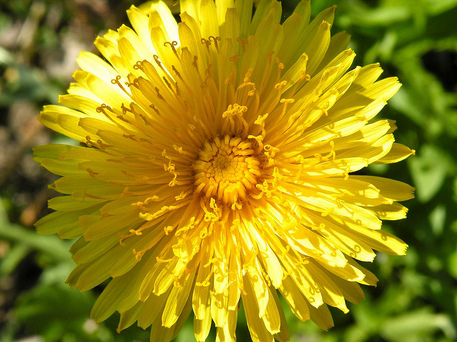
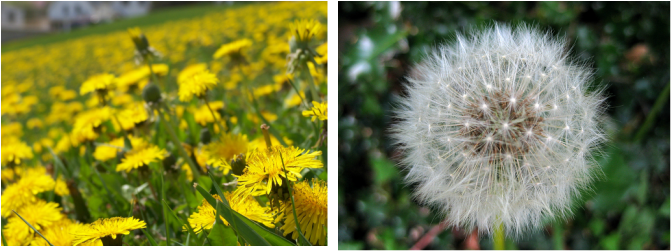
 RSS Feed
RSS Feed
